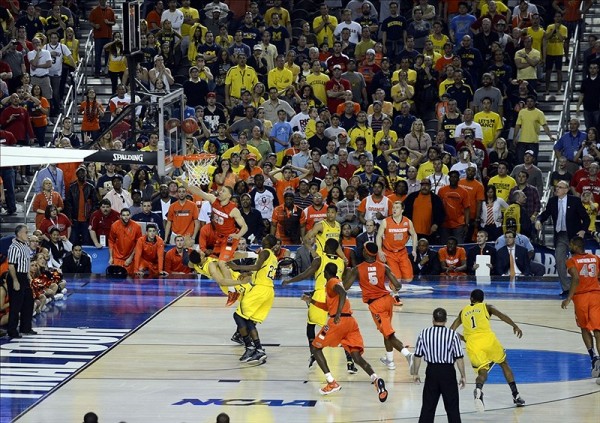College basketball is something we love here at The Student Section, but a loving relationship sometimes requires you to get mad at the one you love.
If you care enough about something or someone, you will express your anger when you feel you need to. In our latest discussion of college basketball on the eve of a new season, we offer three ways (actually four, because one of our panelists was clever) in which college basketball suffers. These are some of the worst components of college basketball’s on-court product:
*
JOSEPH NARDONE
Drive-by fans who constantly suggest ways how to fix it. All of which is code for: How do we make the sport better or more convenient for me to watch? Honestly, people complaining about a sport, especially in ways it can’t be fixed, will drive me bonkers. Unfortunately, we have hit peak season for such a thing.
I kid (not really — I just wanted to duck in two points instead of one, and if you’re reading this sentence, the editor obviously felt it was okay, so I’m really pretty smart).
[EDITOR’S NOTE: Yes, Joe, you are. Well-done! — M.Z.]
Really, the worst thing about college basketball is that coaches feel some sort of need to run meaningless motion sets before starting any honest offense. I am hoping the shorter shot clock helps with that, as the micromanagement of college basketball is something we could do without. Let the players play. It isn’t all that hard. If the team isn’t good enough to hang around and circling the wagons is the only way a team can stay competitive, that’s on them.
RYAN PALENCER
The inability for the officials to differentiate a charge from a block.
This is a point Jay Bilas likes to hammer home on broadcasts. I don’t always agree with Bilas, but this one he has nailed. While he and I both have the benefit of instant, slow-motion replay — which the officials do not — I am convinced that many officials do not have the ability to differentiate a charge from a block. There is a feeling that the officials let the rhythm of the game decide the call, rather than the player who makes the fundamental basketball play. Most of these calls are of the bang-bang variety, but they just need to do a better job of getting them right and establishing better consistency in terms of seeing the defender’s position when the offensive player begins to leave the floor.
These are not easy calls, but officials do not seem to know what distinguishes a charge from a block. That’s a more serious problem than simply missing a call here or there. It needs to be addressed.
MATT ZEMEK
The worst part of college basketball as an on-court product is the final minute of a game. The NBA’s not much better, but this doesn’t somehow take college hoops off the hook.
It cannot be put more plainly: Intentionally committing a violation of the rules should not reward a team. An intentional walk will immediately be cited by defenders of the status quo, offered as an example from another sport of how doing something bad is meant to lead to something good. That’s a reasonable point, but a limited one.
Baseball is about hitting a ball. If the pitcher doesn’t want a hitter to hit a ball, he moves to the next batter. That’s inherent to the sport. It’s not so much an illegality as a preference to not pitch to a hitter. The pitcher and his team can do that.
Fouling is a central violation of Naismith’s rules. You’re not trying to get the ball back. You’re not even trying to deny a layup — hard but clean (non-headshot, non-tackle) fouls on drives to the basket are part of the game. Simply wrapping someone up 30 feet from the basket is NOT basketball. That should not be rewarded.
It’s simple: Make purposeful endgame fouls more punitive. One shot and the ball, and the inbounding team gets to run the baseline after the one foul shot. Other ideas exist, but let’s start there. Let’s see in a season if coaches foul less. If they don’t, make the penalty even more severe. Teams should not be able to foul their way to a victory.
Jim Valvano started a very negative trend in 1983. It’s time to put an end to it.
